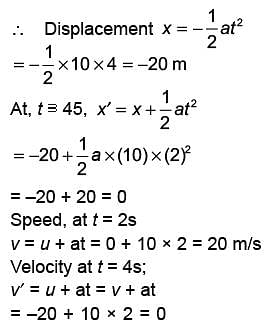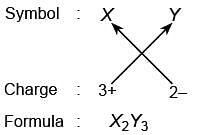High Order Thinking Skills (HOTs) - 5 - Class 9 MCQ
10 Questions MCQ Test - High Order Thinking Skills (HOTs) - 5
If a car is traveling at a speed of 20 m/s and stops in 5 seconds, what is the deceleration of the car?
If a force of 10 N is applied to an object with a mass of 5 kg, what is the acceleration of the object?
| 1 Crore+ students have signed up on EduRev. Have you? Download the App |
If a ball is thrown vertically upwards with an initial velocity of 20 m/s, what will be its velocity after 2 seconds? (Assume g = 10 m/s²)
A car accelerates from rest at a constant rate of 3 m/s². What will be its velocity after 4 seconds?
If the kinetic energy of a particle is 50 J and its velocity is 5 m/s, what is the mass of the particle?
Fill in the blanks by selecting an appropriate option. Two girls Divya and Amrita each of mass 50 kg climb up identical ropes suspended from the ceiling of a gymnasium. Each rope is 12 m long. Divya reaches the top twice quickly as Amrita does. When climbing up from the floor to the ceiling, both the girls do (i) work. Both the girls start from rest at the floor and stop near the ceiling. The net energy transfer during this process is from (ii) to (iii). When Divya has fallen (2/3)rd of the way from the ceiling to the floor, her kinetic energy is approximately (iv) J.

The acceleration-time graph of a particle that starts from rest and moving on a straight line is shown in
the given figure.
Match the quantities of column I with the values in column II and select the correct option from the given codes.
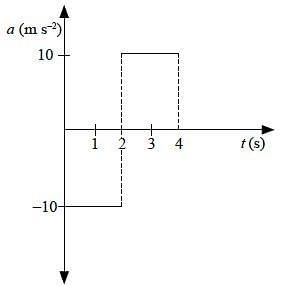

Refer to the given flow chart and select the correct option regarding it.
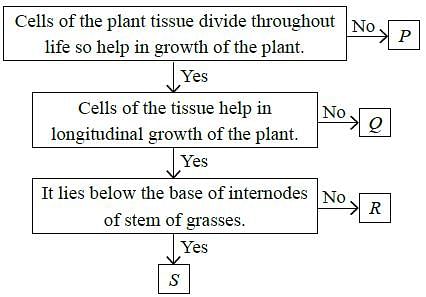

Read the given statements and select the option that correctly fills the blanks in any two of them.
(i) ________ is called as the ribosome factory of the cell.
(ii) ________ plays an important role in the biosynthesis of glycolipids, phospholipids and cholesterol.
(iii) Cristae are studded with small rounded bodies known as ________.
(iv) Granum is the site of ________ reaction during photosynthesis.
The outer electronic configurations of two elements are shown below :
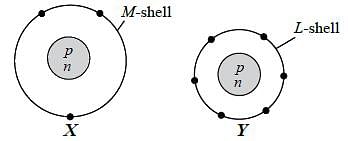
Which of the following statements are incorrect regarding X and Y ?
I. X can have valency 2.
II. X and Y combine to form X2Y3 type of compound.
III. Y will form divalent anion to acquire stable configuration.
IV. The valency of X and Y is the same.









